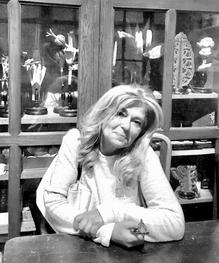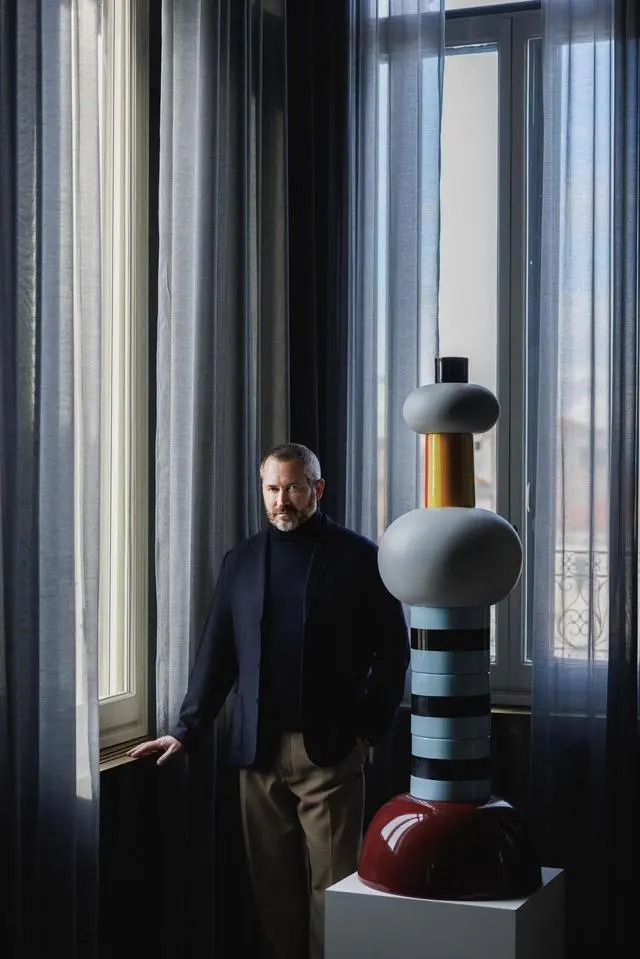04 July 2025 Athens Exhibition Says the Revolution Could Begin on Your Plate | 04 June 2025 Artforum, "Diana Anselmo" | 16 April 2025 Frieze, "Must-See: The Tears of Karl Lagerfeld" | 16 April 2025 Süddeutsche Zeitung Magazin, "Mit welcher Haltung kommt man in der Kunstwelt am weitesten, Maurizio Cattelan?" | 09 April 2025 The Berliner, "Consider Listening: An exhibition urging calm amidst outrage" | 02 April 2025 Wallpaper, "Aboard Gio Ponti's colourful Arlecchino train in Milan, a conversation about design with Formafantasma" | 26 March 2025 Frieze, "Diego Marcon’s Films Conjure a Familiar, Grotesque World" | 19 March 2025 Arts Hub, "1500-degree molten steel installation, inspired by Caravaggio, to drip from the ceiling of Mona" | 15 May 2024 Frieze, "Silvia Rosi Gives Voice to Her Parents’ Migration Story" | 30 March 2024 The Korea Times, "Foreigners Everywhere: Artist duo who inspired this year's Venice Biennale lands in Seoul" | 07 February 2024 Artnet News, "Ceramics Are as Contemporary as a Smartphone: Chiara Camoni on Her Tactile Sculptures"
Marina Dacci
interviews
01 March 2022
Curators
Bridges with Foreign Curators and Galleries All Still to Be Built
In your experience, which living Italian contemporary artists have achieved the greatest visibility abroad, and thanks to which factors (e.g., galleries, biennials, exhibitions, curators, etc.)?
Foreigners discovered Italian Arte Povera and Conceptual Art more than 30 years after their emergence, and all the artists associated with these movements are unquestionably appreciated and recognized everywhere. Among these, particularly those still living, are Giuseppe Penone, Michelangelo Pistoletto, Pier Paolo Calzolari, Giovanni Anselmo, Claudio Parmiggiani, Giulio Paolini, and also Enzo Cucchi, Maurizio Cattelan, Roberto Cuoghi, and Francesco Vezzoli. Among the younger generation who have made a significant step outside Italy are Lara Favaretto, Marzia Migliora, Marinella Senatore, Rä di Martino, Chiara Camoni, Alessandro Piangiamore, Loris Cecchini, Pietro Roccasalva, Fabio Viale, Francesco Arena, Gian Maria Tosatti, Giulia Cenci, Arcangelo Sassolino, Masbedo, Claudia Losi, Alice Cattaneo, Silvia Giambrone, Francesco Gennari, Alfredo Aceto, Renato Leotta, Danilo Correale, Ornaghi and Prestinari, Elena Mazzi — sometimes thanks also to their dynamism in leaving our territory and engaging with other cultures. However, this visibility is limited compared to the international recognition of other foreign artists. I have omitted Italian artists living abroad, such as Piero Golia, Enrico David, Salvatore Arancio, Monica Bonvicini, Luisa Rabbia, Francesco Clemente, Paolo Roversi, because this is another chapter.
For Italian artists, the reasons behind the visibility they have gained abroad are very hard to define. Unlike other countries where curators, collectors, and some commercial galleries have great influence in creating strong visibility, in Italy things do not quite work that way. One reason could be that we have always been considered second-rate abroad in each of these categories, if we want to call them that. Added to this is the policy of Italian museums, which rarely support and promote Italian artists (with very few exceptions), and consequently do not allow them to stabilize, gain credit, and consolidate their careers. Without detracting from the artistic value of younger Italian artists who have had more international success, I believe this breakthrough is also due to chance situations, often linked to personal encounters.
In your opinion, which contemporary Italian artists have not yet reached adequate visibility despite their artistic value, and what are the causes of this lack of recognition?
I can say that, in my opinion, today in Italy there are quite a few talented artists who do not have adequate international visibility, both among those in their thirties and forties and the previous generation; in my view, they are much better than some foreign artists who have achieved international success. Many, however, unfortunately tend to follow models and approaches that work on the foreign market, resulting in a derivative, never convincing approach tied to certain so-called “formal” trends.
In your experience, what are the steps and elements that favor the international career of a contemporary Italian artist? And where is the Italian system lacking in supporting contemporary Italian art on the international stage?
See my previous answer. Specifically: exhibitions in museums in their own country, participation in some biennials, the ability of their representing galleries to build some bridges with foreign curators and galleries, thus circulating the work. Then, given the current context, for artists it is important to take risks, break away from Italy, and open relationships with other countries to get known. Not just residencies, which are more suited for very young artists, but also temporary relocations to other places, trying to build meaningful relationships.
© All rights reserved
other interviews
other interviews Luca Bombassei
Being a Patron Today: Connecting, Listening, Acting
Curators
20 May 2025
Luca Bombassei
Being a Patron Today: Connecting, Listening, Acting
Curators
20 May 2025
 Valentino Catricalà
Invisible Talents: The Paradox of Italian Art Abroad
Curators
20 May 2025
Valentino Catricalà
Invisible Talents: The Paradox of Italian Art Abroad
Curators
20 May 2025
 Vittoria Matarrese
Italian Art, a Global Vocation in a Local System
Curators
22 April 2025
Vittoria Matarrese
Italian Art, a Global Vocation in a Local System
Curators
22 April 2025
 Francesca Guerisoli
Greater Public Support for the Production and Promotion of Artistic Work
Francesca Guerisoli
Greater Public Support for the Production and Promotion of Artistic Work
